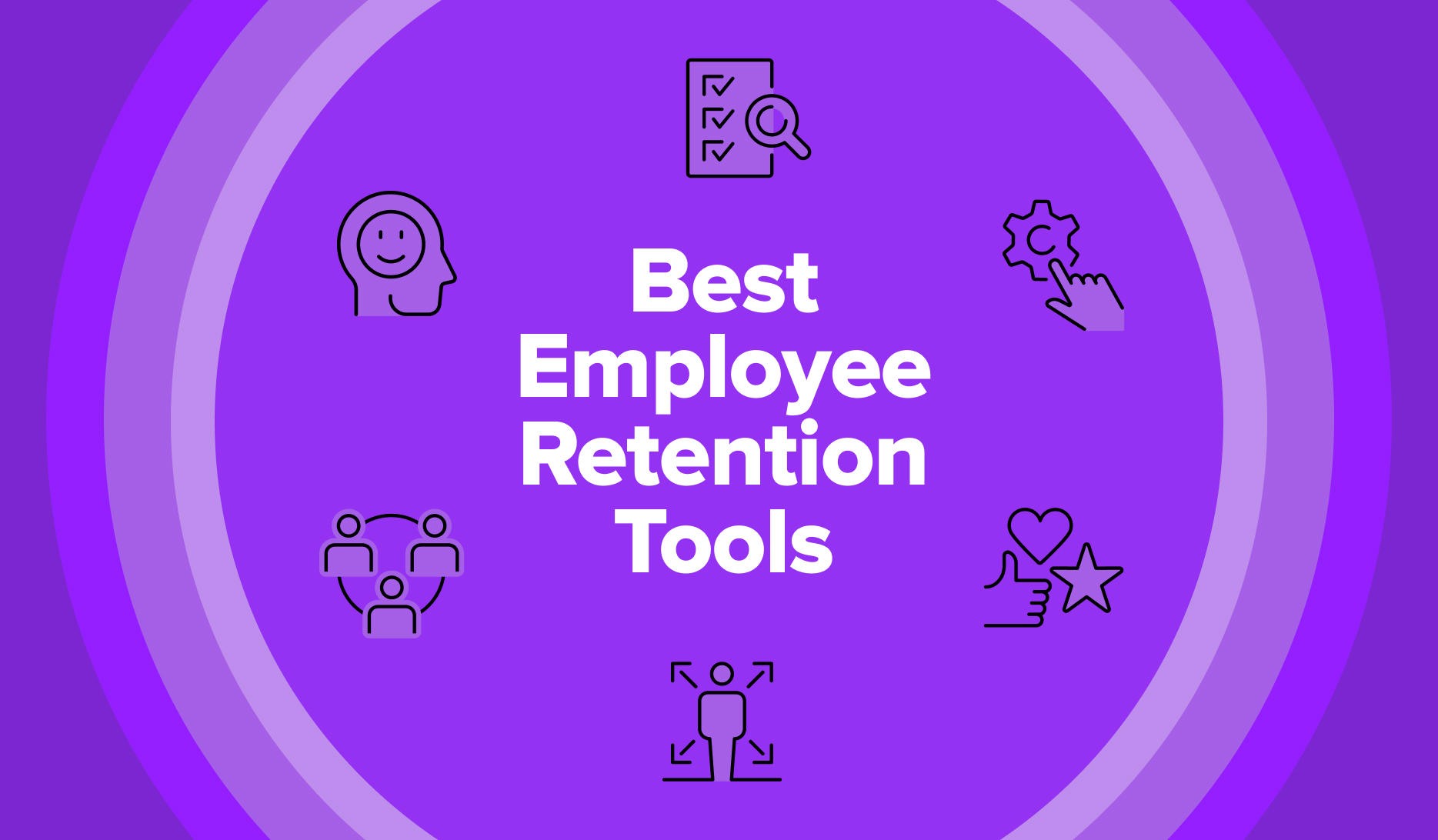What Are the Best Employee Retention Tools?



Most companies have “maximizing employee retention” at the top of their long-term organizational strategies and priorities. Unfortunately, too many of those companies view employee retention as just numbers and figures on a spreadsheet, and they’re missing the point.
The key to employee retention isn’t about analytics and quick, short-term fixes. It’s about creating a positive atmosphere where employees have room to grow and encouragement to focus on their own well-being. It’s about creating opportunities for growth and sustainable happiness.
When organizations think about retention, they must shift their focus from bottom lines and profit margins to improving the quality of life for their people.
6 Employee Retention Tools to Increase Employee Well-Being
Here are six employee retention tools that organizations should use to put their people first. From improving inter-company communication to interactive wellness initiatives, these are perfect additions to every employer’s tool belt.
1. Collaboration Tools

Today’s employee wants to be a member of a close-knit team, where communication, collaboration, and even friendships are encouraged. The best organizations in the world don’t build a workforce; they create a family. That’s why tools that enable inter-company communication, collaboration and teamwork are so essential. A couple of popular examples of collaboration software solutions are Slack and Google Workspaces.
Slack is a platform that encourages communication, making it easier for team members to work together. They boast that they make it “downright pleasant to work together.” Whether the company is remote or everyone’s located in the same room, Slack is an incredible tool to promote easy and fun communication between departments, teams, and co-workers.
Formerly known as G‑Suite, Google Workspaces is another fully-integrated platform that streamlines communication and collaboration. Their full suite of services includes Gmail, Chat, Google Drive, Docs and more, all features that enable companies to create a truly collaborative and dynamic team environment.
2. Employee Experience
Breaking away from software for a moment, it’s wise to focus on other tools that impact a person’s well-being. There are specific tools that companies can utilize that make work easier, less tedious and more comfortable.
Companies should invest in their employee’s everyday well-being with things like ergonomic office chairs to help with posture and back pain, upgraded technology, like noise-canceling headphones, and faster computers to decrease frustration and increase focus.
There are also plenty of tools on the software side of things. For instance, there’s no reason to force an employee to spend hours working on an Excel spreadsheet if an automated program can do it for them.
As stated in Inc, expecting employees to be constantly busy and assigning them tedious work to fill their time can be the death of an organization. No employee should have to run themselves ragged to please their employer.
3. Surveys

Of course, many organizations aren’t sure which tools will have the most significant impact on their employees’ well-being. That’s fine. The modern team is dynamic and fluid, and no two team members want the same thing.
If a company finds itself looking for solutions, it should consider using one of the employer-employee handbook’s oldest and most trusted tools.
Surveys, especially anonymous surveys, allow employees to be open and honest. Employees have a voice, so employers should encourage them to use it.
4. Career Development and Education
There is nothing as critical to an employee’s job satisfaction as the opportunity for career development and growth within an organization. No one wants to be stuck or trapped in the same position for years or decades at a time. That’s why organizations that aim to serve their employees’ best interests will offer continuous career development, training and education.
There are many tools for education and career development, and Coursera and Udacity are two of the most popular online education platforms.
Coursera offers intermediate to expert-level educational courses from top universities, companies and experts in their respective fields. With online learning capabilities and flexible schedules, it’s an optimal choice for any employee interested in pursuing higher education.
A similar platform, Udacity, offers employers and team members alike the opportunity to optimize, enhance and increase their skill sets. Their mission is to help companies deprioritize recruiting and reprioritize their current team.
5. Wellness Initiatives

At the core of every incredible company is a team of hard-working, healthy and happy employees. When an organization prioritizes happiness, health and wellness, they can see almost immediate boosts in productivity, morale and employee retention.
Of course, it’s not enough to just give everyone a gym membership and urge them to lose weight. In fact, that’s a terrible idea.
Wellness initiatives should be focused on emotional, mental and physical health, and no program should be created without considering the various lifestyles and struggles that modern employees must face. Fortunately, there are many tools, programs and ideas that serve this purpose.
- Hire a registered dietician who can work with employees, one-on-one, to implement healthy and nutritious diets.
- Take cooking classes together so that everyone can learn healthy cooking techniques. This option also doubles as a team-building event.
- Offer comprehensive healthcare services. Do not underestimate the necessity for high-quality healthcare.
- Promote vacation time and personal days. It’s an essential part of emotional, mental and physical wellness for employees to take a break, get out of the office and focus on themselves.
- Encourage employees to seek help. Too often, people with mental or physical illnesses are forced to suffer alone. Creating an environment that encourages employees to reach out when they need help is a perfect way for organizations to prioritize the well-being of their teams.
- Of course, what’s important to some isn’t always essential to everyone. So, whichever wellness initiatives a company chooses should be 100% optional.
6. Customizable, Lifestyle Benefits Platform
If no two employees are the same, why do so many organizations insist on a one-size-fits-all approach to employee benefits? It doesn’t make sense.
One of the best ways to improve a person’s happiness and well-being is to give them a choice. That’s why Fringe’s customizable lifestyle benefits platform is the perfect addition to any organization hoping to increase employee retention.
A personalized benefits program puts the power back in the hands of the people who need it most – the employees. They know more than anyone which options will have the most positive impact on their lives. So, employers should offer them the chance to customize their benefits to best fit their lifestyle.
Like this content? Sign up for our newsletter today.

.jpeg)
